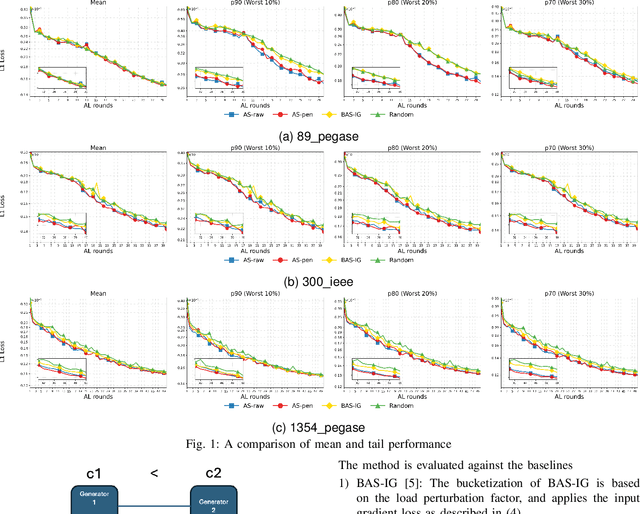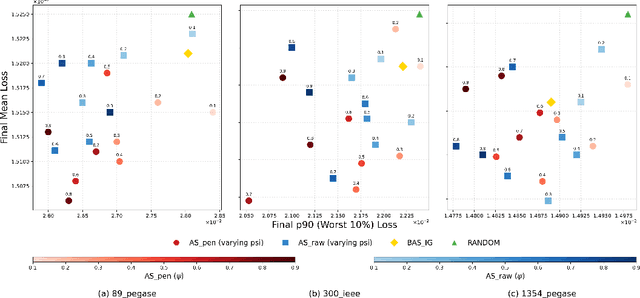Miao Li
Wuhan University
Learning Generalizable Hand-Object Tracking from Synthetic Demonstrations
Dec 22, 2025Abstract:We present a system for learning generalizable hand-object tracking controllers purely from synthetic data, without requiring any human demonstrations. Our approach makes two key contributions: (1) HOP, a Hand-Object Planner, which can synthesize diverse hand-object trajectories; and (2) HOT, a Hand-Object Tracker that bridges synthetic-to-physical transfer through reinforcement learning and interaction imitation learning, delivering a generalizable controller conditioned on target hand-object states. Our method extends to diverse object shapes and hand morphologies. Through extensive evaluations, we show that our approach enables dexterous hands to track challenging, long-horizon sequences including object re-arrangement and agile in-hand reorientation. These results represent a significant step toward scalable foundation controllers for manipulation that can learn entirely from synthetic data, breaking the data bottleneck that has long constrained progress in dexterous manipulation.
RGMP: Recurrent Geometric-prior Multimodal Policy for Generalizable Humanoid Robot Manipulation
Nov 12, 2025Abstract:Humanoid robots exhibit significant potential in executing diverse human-level skills. However, current research predominantly relies on data-driven approaches that necessitate extensive training datasets to achieve robust multimodal decision-making capabilities and generalizable visuomotor control. These methods raise concerns due to the neglect of geometric reasoning in unseen scenarios and the inefficient modeling of robot-target relationships within the training data, resulting in significant waste of training resources. To address these limitations, we present the Recurrent Geometric-prior Multimodal Policy (RGMP), an end-to-end framework that unifies geometric-semantic skill reasoning with data-efficient visuomotor control. For perception capabilities, we propose the Geometric-prior Skill Selector, which infuses geometric inductive biases into a vision language model, producing adaptive skill sequences for unseen scenes with minimal spatial common sense tuning. To achieve data-efficient robotic motion synthesis, we introduce the Adaptive Recursive Gaussian Network, which parameterizes robot-object interactions as a compact hierarchy of Gaussian processes that recursively encode multi-scale spatial relationships, yielding dexterous, data-efficient motion synthesis even from sparse demonstrations. Evaluated on both our humanoid robot and desktop dual-arm robot, the RGMP framework achieves 87% task success in generalization tests and exhibits 5x greater data efficiency than the state-of-the-art model. This performance underscores its superior cross-domain generalization, enabled by geometric-semantic reasoning and recursive-Gaussion adaptation.
Which Similarity-Sensitive Entropy?
Nov 10, 2025Abstract:A canonical step in quantifying a system is to measure its entropy. Shannon entropy and other traditional entropy measures capture only the information encoded in the frequencies of a system's elements. Recently, Leinster, Cobbold, and Reeve (LCR) introduced a method that also captures the rich information encoded in the similarities and differences among elements, yielding similarity-sensitive entropy. More recently, the Vendi score (VS) was introduced as an alternative, raising the question of how LCR and VS compare, and which is preferable. Here we address these questions conceptually, analytically, and experimentally, using 53 machine-learning datasets. We show that LCR and VS can differ by orders of magnitude and can capture complementary information about a system, except in limiting cases. We demonstrate that both LCR and VS depend on how similarities are scaled and introduce the concept of ``half distance'' to parameterize this dependence. We prove that VS provides an upper bound on LCR for several values of the Rényi-Hill order parameter and conjecture that this bound holds for all values. We conclude that VS is preferable only when interpreting elements as linear combinations of a more fundamental set of ``ur-elements'' or when the system or dataset possesses a quantum-mechanical character. In the broader circumstance where one seeks simply to capture the rich information encoded by similarity, LCR is favored; nevertheless, for certain half-distances the two methods can complement each other.
Constraint-Informed Active Learning for End-to-End ACOPF Optimization Proxies
Nov 09, 2025

Abstract:This paper studies optimization proxies, machine learning (ML) models trained to efficiently predict optimal solutions for AC Optimal Power Flow (ACOPF) problems. While promising, optimization proxy performance heavily depends on training data quality. To address this limitation, this paper introduces a novel active sampling framework for ACOPF optimization proxies designed to generate realistic and diverse training data. The framework actively explores varied, flexible problem specifications reflecting plausible operational realities. More importantly, the approach uses optimization-specific quantities (active constraint sets) that better capture the salient features of an ACOPF that lead to the optimal solution. Numerical results show superior generalization over existing sampling methods with an equivalent training budget, significantly advancing the state-of-practice for trustworthy ACOPF optimization proxies.
ManiDP: Manipulability-Aware Diffusion Policy for Posture-Dependent Bimanual Manipulation
Oct 27, 2025Abstract:Recent work has demonstrated the potential of diffusion models in robot bimanual skill learning. However, existing methods ignore the learning of posture-dependent task features, which are crucial for adapting dual-arm configurations to meet specific force and velocity requirements in dexterous bimanual manipulation. To address this limitation, we propose Manipulability-Aware Diffusion Policy (ManiDP), a novel imitation learning method that not only generates plausible bimanual trajectories, but also optimizes dual-arm configurations to better satisfy posture-dependent task requirements. ManiDP achieves this by extracting bimanual manipulability from expert demonstrations and encoding the encapsulated posture features using Riemannian-based probabilistic models. These encoded posture features are then incorporated into a conditional diffusion process to guide the generation of task-compatible bimanual motion sequences. We evaluate ManiDP on six real-world bimanual tasks, where the experimental results demonstrate a 39.33$\%$ increase in average manipulation success rate and a 0.45 improvement in task compatibility compared to baseline methods. This work highlights the importance of integrating posture-relevant robotic priors into bimanual skill diffusion to enable human-like adaptability and dexterity.
MIPS: a Multimodal Infinite Polymer Sequence Pre-training Framework for Polymer Property Prediction
Jul 27, 2025Abstract:Polymers, composed of repeating structural units called monomers, are fundamental materials in daily life and industry. Accurate property prediction for polymers is essential for their design, development, and application. However, existing modeling approaches, which typically represent polymers by the constituent monomers, struggle to capture the whole properties of polymer, since the properties change during the polymerization process. In this study, we propose a Multimodal Infinite Polymer Sequence (MIPS) pre-training framework, which represents polymers as infinite sequences of monomers and integrates both topological and spatial information for comprehensive modeling. From the topological perspective, we generalize message passing mechanism (MPM) and graph attention mechanism (GAM) to infinite polymer sequences. For MPM, we demonstrate that applying MPM to infinite polymer sequences is equivalent to applying MPM on the induced star-linking graph of monomers. For GAM, we propose to further replace global graph attention with localized graph attention (LGA). Moreover, we show the robustness of the "star linking" strategy through Repeat and Shift Invariance Test (RSIT). Despite its robustness, "star linking" strategy exhibits limitations when monomer side chains contain ring structures, a common characteristic of polymers, as it fails the Weisfeiler-Lehman~(WL) test. To overcome this issue, we propose backbone embedding to enhance the capability of MPM and LGA on infinite polymer sequences. From the spatial perspective, we extract 3D descriptors of repeating monomers to capture spatial information. Finally, we design a cross-modal fusion mechanism to unify the topological and spatial information. Experimental validation across eight diverse polymer property prediction tasks reveals that MIPS achieves state-of-the-art performance.
Probing Deep into Temporal Profile Makes the Infrared Small Target Detector Much Better
Jun 15, 2025Abstract:Infrared small target (IRST) detection is challenging in simultaneously achieving precise, universal, robust and efficient performance due to extremely dim targets and strong interference. Current learning-based methods attempt to leverage ``more" information from both the spatial and the short-term temporal domains, but suffer from unreliable performance under complex conditions while incurring computational redundancy. In this paper, we explore the ``more essential" information from a more crucial domain for the detection. Through theoretical analysis, we reveal that the global temporal saliency and correlation information in the temporal profile demonstrate significant superiority in distinguishing target signals from other signals. To investigate whether such superiority is preferentially leveraged by well-trained networks, we built the first prediction attribution tool in this field and verified the importance of the temporal profile information. Inspired by the above conclusions, we remodel the IRST detection task as a one-dimensional signal anomaly detection task, and propose an efficient deep temporal probe network (DeepPro) that only performs calculations in the time dimension for IRST detection. We conducted extensive experiments to fully validate the effectiveness of our method. The experimental results are exciting, as our DeepPro outperforms existing state-of-the-art IRST detection methods on widely-used benchmarks with extremely high efficiency, and achieves a significant improvement on dim targets and in complex scenarios. We provide a new modeling domain, a new insight, a new method, and a new performance, which can promote the development of IRST detection. Codes are available at https://github.com/TinaLRJ/DeepPro.
X-Factor: Quality Is a Dataset-Intrinsic Property
May 28, 2025Abstract:In the universal quest to optimize machine-learning classifiers, three factors -- model architecture, dataset size, and class balance -- have been shown to influence test-time performance but do not fully account for it. Previously, evidence was presented for an additional factor that can be referred to as dataset quality, but it was unclear whether this was actually a joint property of the dataset and the model architecture, or an intrinsic property of the dataset itself. If quality is truly dataset-intrinsic and independent of model architecture, dataset size, and class balance, then the same datasets should perform better (or worse) regardless of these other factors. To test this hypothesis, here we create thousands of datasets, each controlled for size and class balance, and use them to train classifiers with a wide range of architectures, from random forests and support-vector machines to deep networks. We find that classifier performance correlates strongly by subset across architectures ($R^2=0.79$), supporting quality as an intrinsic property of datasets independent of dataset size and class balance and of model architecture. Digging deeper, we find that dataset quality appears to be an emergent property of something more fundamental: the quality of datasets' constituent classes. Thus, quality joins size, class balance, and model architecture as an independent correlate of performance and a separate target for optimizing machine-learning-based classification.
CrashAgent: Crash Scenario Generation via Multi-modal Reasoning
May 23, 2025



Abstract:Training and evaluating autonomous driving algorithms requires a diverse range of scenarios. However, most available datasets predominantly consist of normal driving behaviors demonstrated by human drivers, resulting in a limited number of safety-critical cases. This imbalance, often referred to as a long-tail distribution, restricts the ability of driving algorithms to learn from crucial scenarios involving risk or failure, scenarios that are essential for humans to develop driving skills efficiently. To generate such scenarios, we utilize Multi-modal Large Language Models to convert crash reports of accidents into a structured scenario format, which can be directly executed within simulations. Specifically, we introduce CrashAgent, a multi-agent framework designed to interpret multi-modal real-world traffic crash reports for the generation of both road layouts and the behaviors of the ego vehicle and surrounding traffic participants. We comprehensively evaluate the generated crash scenarios from multiple perspectives, including the accuracy of layout reconstruction, collision rate, and diversity. The resulting high-quality and large-scale crash dataset will be publicly available to support the development of safe driving algorithms in handling safety-critical situations.
DexFlow: A Unified Approach for Dexterous Hand Pose Retargeting and Interaction
May 02, 2025Abstract:Despite advances in hand-object interaction modeling, generating realistic dexterous manipulation data for robotic hands remains a challenge. Retargeting methods often suffer from low accuracy and fail to account for hand-object interactions, leading to artifacts like interpenetration. Generative methods, lacking human hand priors, produce limited and unnatural poses. We propose a data transformation pipeline that combines human hand and object data from multiple sources for high-precision retargeting. Our approach uses a differential loss constraint to ensure temporal consistency and generates contact maps to refine hand-object interactions. Experiments show our method significantly improves pose accuracy, naturalness, and diversity, providing a robust solution for hand-object interaction modeling.
 Add to Chrome
Add to Chrome Add to Firefox
Add to Firefox Add to Edge
Add to Edge